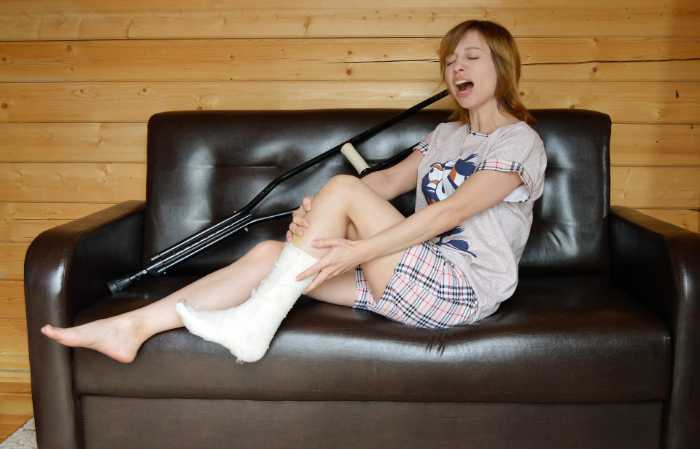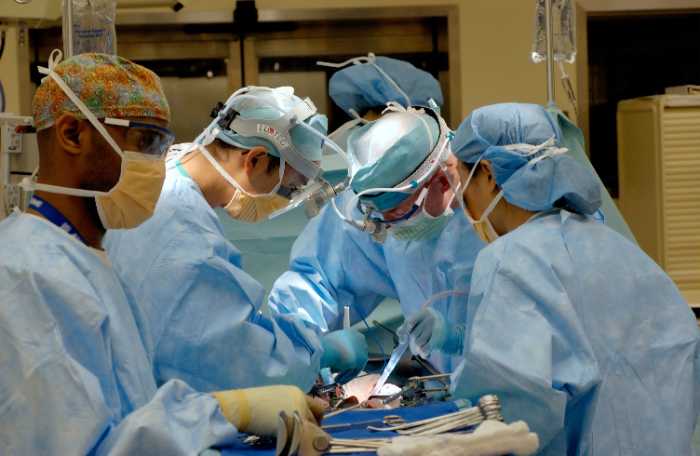A blood clot in the leg, which is mostly called DVT (deep vein thrombosis), often goes undetected. Many people don’t know they have a blood clot until it causes serious health problems. That’s why it’s important to be aware of the symptoms of a blood clot in the leg. In this blog post, we will discuss the symptoms of a DVT and what you can do to prevent them.

This is a blood clot that forms in the deep veins of the body, usually in the leg. Deep Vein Thrombosis can cause severe pain and swelling, and if the clot breaks loose, it can travel to the lungs and block blood flow (pulmonary embolism). Pulmonary embolism is a life-threatening condition.
DVT occurs when blood flow slows down or changes direction. This can happen after surgery, during a long period of sitting, or from an injury. People with certain medical conditions such as cancer, heart failure, or stroke are at an increased risk for DVT. Smoking, pregnancy, and taking estrogen also increase the risk.
The symptoms of DVT include pain, swelling, redness, and warmth in the affected limb. DVT is diagnosed with a blood test and ultrasound. Treatment involves taking blood thinners to prevent the clot from getting bigger and to reduce the risk of pulmonary embolism. In some cases, a filter is placed in the vein to catch clots before they reach the lungs. Surgery may be necessary to remove a large clot.
One of the most serious complications that can occur when blood circulation is restricted is the formation of blood clots. If left untreated, blood clots can cause serious health problems, including stroke and heart attack. Therefore, it is important to be aware of the symptoms of blood clot formation and to seek medical attention if you experience any of them.
One of the most common symptoms of blood clot formation is leg pain. This is usually due to the pooling in the blood vessel and the resulting inflammation. The leg pain is typically worse when you are standing or sitting for long periods of time, as this further reduces blood flow. In some cases, the pain may be so severe that it interferes with your daily activities. Other symptoms of blood clot formation include swelling in the affected limb, redness or discoloration of the skin, and warmth in the area. If you experience any of these symptoms, it is important to seek medical attention immediately. Blood clotting is a serious condition that can be life-threatening if not treated promptly.
Sometimes blood clot occurs without any obvious symptoms, there are several potential causes that can increase your risk of developing this condition. One of the most common causes of DVT is prolonged immobility. This could be due to a long period of bed rest or sitting for extended periods of time, such as during a long plane flight. Other potential causes include injuries or surgery to the legs or pelvis, certain medications that increase blood clotting, and certain medical conditions that affect blood clotting.

If you are at risk of DVT, there are several lifestyle changes that you can make to help reduce your risk. These include regularly moving your legs while sitting, exercising regularly, and wearing loose-fitting clothing. In addition, if you are taking medications that increase your risk of blood clotting, your doctor may recommend taking blood thinners to help reduce this risk.
There are many risk factors for blood clots, including age, family history, certain medical conditions, and lifestyle factors. For example, people over the age of 60 are more likely to develop blood clots than younger people. And people with family members who have had blood clots are also at higher risk. Certain medical conditions, such as cancer, heart disease, and obesity, can also increase the risk of developing blood clots.
Finally, lifestyle factors such as smoking and lack of exercise can also contribute to the development of blood clots. If you have any of these risk factors, it’s important to talk to your doctor about your individual risk and what you can do to reduce it.
Blood clotting is a necessary process that prevents us from bleeding to death when we cut ourselves. However, sometimes blood clots form inside our veins without an injury, and if they aren’t treated, they can cause serious problems. One of the most common locations for a blood clot is in the leg, and if not treated promptly, it can lead to pain, swelling, and even disability.

There are several things that you can do to treat a blood clot in your leg. First, try to elevate the affected leg above your heart as much as possible to help reduce the swelling. You should also avoid walking or standing for long periods of time to prevent the clot from getting bigger. If you’re in pain, over-the-counter medications like ibuprofen can help, but be sure to talk to your doctor before taking anything. If the clot is large or doesn’t seem to be going away, your doctor may recommend more aggressive treatment, such as blood thinners or surgery. No matter what, it’s important to see a doctor so that they can properly diagnose and treat your condition.
A blood clot in the leg is a serious condition that can lead to potentially life-threatening complications. Symptoms of a blood clot include pain, swelling, and redness in the affected area. If left untreated, a blood clot can break free and travel to the lungs, causing a pulmonary embolism. Therefore, it is important to be aware of the symptoms of a blood clot and to seek medical help if you experience any of them.
In most cases, blood clots can be successfully treated with medication or surgery. With prompt treatment, the risk of serious complications is low. However, if a blood clot is left untreated, it can be fatal. Therefore, it is important to seek medical help as soon as possible if you think you may have a blood clot.
Read More: